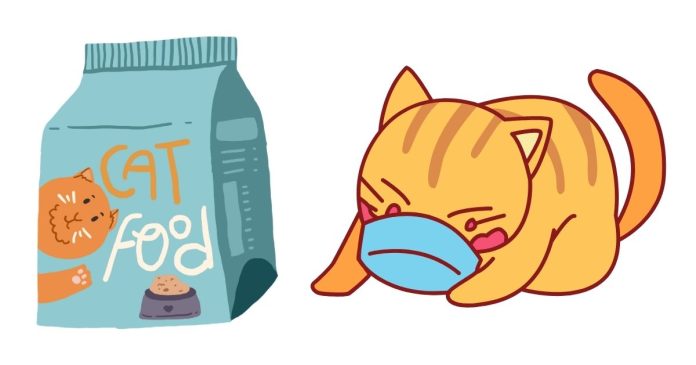As a cat owner, ensuring your furry friend gets the right nutrition is essential for their health and happiness. With countless cat food brands and types available, choosing the best option can feel overwhelming. From dry kibble to wet food and specialized diets, each has its own benefits and considerations.
In this blog post, we’ll explore the best cat food recommendations, tailored to different needs, life stages, and dietary preferences, to help you make an informed choice.
What Makes a Good Cat Food?
A high-quality cat food should meet your cat’s nutritional requirements and cater to their unique needs. Here are some key factors to look for:
- High Protein Content: Cats are obligate carnivores, meaning they require protein from animal sources. Look for meat or fish as the primary ingredient.
- Essential Nutrients: Taurine, omega-3 and omega-6 fatty acids, vitamins, and minerals are vital for a cat’s overall health.
- No Harmful Additives: Avoid foods with artificial colors, flavors, and preservatives.
- Life Stage Suitability: Choose food formulated for your cat’s age (kitten, adult, or senior) to ensure they receive the right nutrients.
- Specific Needs: Consider any health conditions, such as allergies, obesity, or urinary tract issues, when selecting food.
Top Cat Food Recommendations
1. Best Dry Cat Food
- Hill’s Science Diet Adult Indoor Cat Food
- Why It’s Great: Specially formulated for indoor cats, it helps maintain a healthy weight and digestive health.
- Key Ingredients: Chicken, whole grain wheat, and brown rice.
- Best For: Adult indoor cats needing balanced nutrition.
- Blue Buffalo Wilderness High-Protein Dry Cat Food
- Why It’s Great: Grain-free with a high protein content to support lean muscle development.
- Key Ingredients: Deboned chicken, sweet potatoes, and peas.
- Best For: Active cats or those with grain sensitivities.
2. Best Wet Cat Food
- Fancy Feast Classic Paté
- Why It’s Great: Affordable and available in a variety of flavors, it provides complete nutrition with a smooth texture.
- Key Ingredients: Turkey, chicken, or seafood (depending on the flavor).
- Best For: Cats with picky eating habits.
- Weruva Cats in the Kitchen Grain-Free Wet Food
- Why It’s Great: Made with human-grade ingredients and free from grains, gluten, and carrageenan.
- Key Ingredients: Tuna, chicken, and pumpkin.
- Best For: Cats with sensitive stomachs or specific dietary needs.
3. Best Kitten Food
- Royal Canin Feline Health Nutrition Kitten Formula
- Why It’s Great: Packed with nutrients for healthy growth and easy-to-chew kibble.
- Key Ingredients: Chicken meal, rice, and corn gluten meal.
- Best For: Kittens under 12 months old.
- Purina Pro Plan Focus Kitten Canned Food
- Why It’s Great: Contains DHA for brain and vision development.
- Key Ingredients: Real chicken or salmon with liver.
- Best For: Kittens transitioning to solid food.
4. Best for Senior Cats
- Hill’s Science Diet Senior 7+ Cat Food
- Why It’s Great: Supports kidney health and joint health for aging cats.
- Key Ingredients: Chicken meal and brown rice.
- Best For: Cats aged 7 years and older.
- Nutro Wholesome Essentials Senior Dry Cat Food
- Why It’s Great: Rich in antioxidants for immune support and easy on the stomach.
- Key Ingredients: Farm-raised chicken, sweet potato, and peas.
- Best For: Senior cats with declining energy levels.
5. Best for Special Dietary Needs
- Hill’s Prescription Diet c/d Multicare Urinary Care
- Why It’s Great: Clinically proven to reduce the recurrence of urinary stones.
- Key Ingredients: Chicken and rice.
- Best For: Cats prone to urinary tract infections or bladder issues.
- Natural Balance Limited Ingredient Diets
- Why It’s Great: Ideal for cats with food sensitivities or allergies.
- Key Ingredients: Salmon and green peas (limited ingredient formula).
- Best For: Cats requiring hypoallergenic diets.
How to Transition to New Cat Food
Switching your cat’s diet too quickly can lead to digestive upset. Follow these steps to make the transition smooth:
- Day 1–3: Mix 75% old food with 25% new food.
- Day 4–6: Mix 50% old food with 50% new food.
- Day 7–9: Mix 25% old food with 75% new food.
- Day 10+: Fully switch to the new food.
Monitor your cat during the transition for any signs of digestive issues or allergic reactions.
Additional Tips for Choosing the Best Cat Food
- Consult Your Veterinarian: Always seek advice from a vet, especially if your cat has specific health concerns.
- Read the Label: Look for transparency in ingredient sourcing and manufacturing processes.
- Monitor Your Cat’s Weight: Adjust portion sizes as needed to maintain a healthy weight.
Conclusion
Choosing the right cat food is crucial for your feline’s health and well-being. Whether you opt for dry kibble, wet food, or a combination of both, focus on quality ingredients and nutritional balance. Each cat is unique, so consider their age, activity level, and any health concerns when selecting a diet.
By providing your cat with the best possible nutrition, you’re giving them the foundation for a happy and healthy life. Have a favorite cat food brand or recommendation? Share your thoughts in the comments below!



